The Convex (No Place Is or Ever Was Empty)
On Black construction and Jasper Marsalis's Stadium
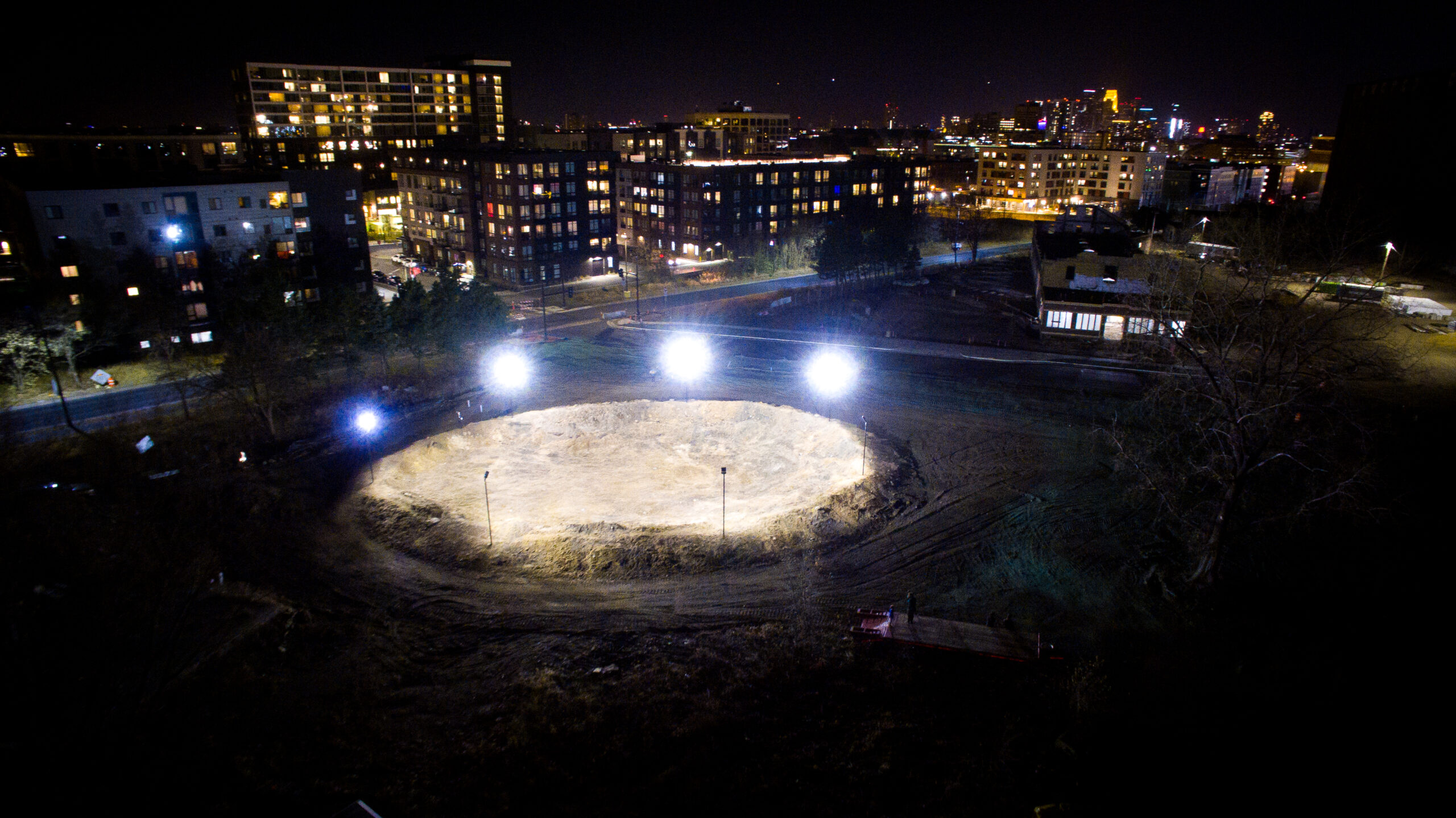
Stadium, a work by musician and artist Jasper Marsalis, could be modestly described as a concave structure. Located in an under-construction Minneapolis neighborhood, this crater-like outdoor project was commissioned by Midway Contemporary Art in the summer of 2020. What catches my eye—or playfully, doesn’t—is the richness in Stadium’s sprawling empty space; in my mind, this work is significantly and conceptually convex. The landscape Marsalis emptied of soil, rocks, and rubbish is now filled with specters. Introducing the installation’s companion catalogue, Crater Speak, the artist testifies, “I am haunted by likenesses. I’m haunted by my self.” In this piece, I’ll impose my social relations, my projections onto the Stadium. But before I discuss any specters, I must become a spectator.
Seven light poles encircle and demarcate the work and without them, it might be easy to mistake this project as part of the extensive development in the surrounding area, which is soon to be called Malcolm Yards. Concealed by packed snow, footsteps reveal several paths into Marsalis’s work. Concrete bits, large rocks, and soft dirt peek through, then slope 15 feet toward the depression’s center. The expansive, sunken, and arena-like space is empty, swallowing its visitors in a 140- by 120-foot hole. At night, the lights direct attention inward toward what I think of as a suspended stage, delivering a sense of spectacle.
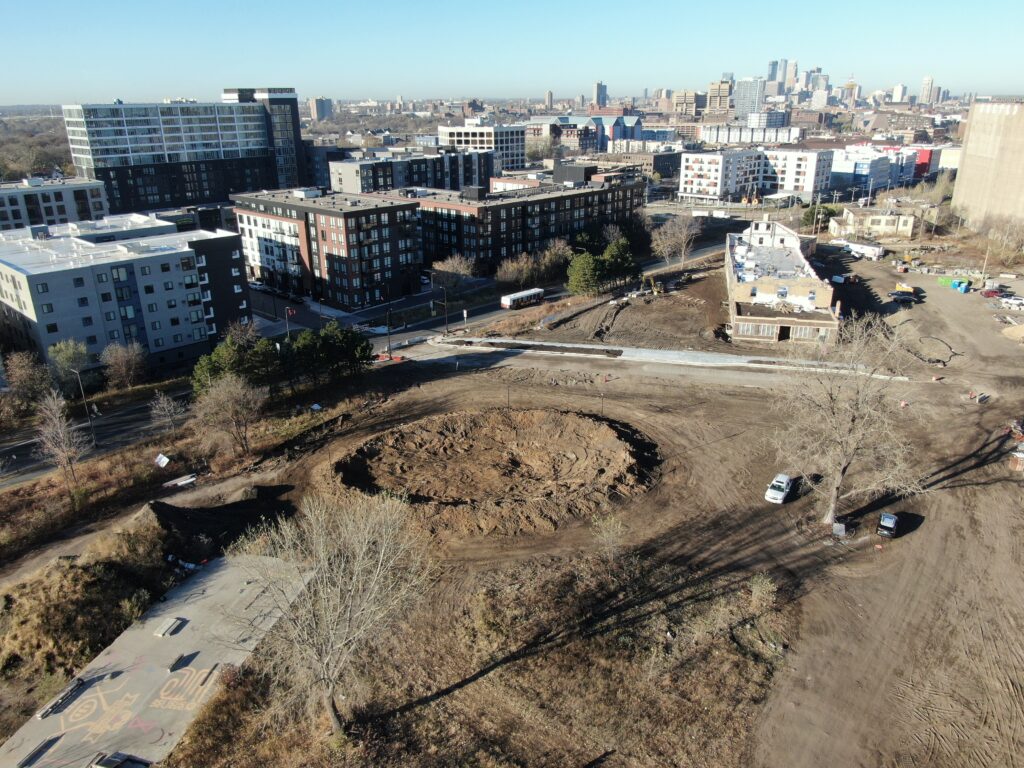
Jasper Marsalis, Stadium, 2020. Soil, concrete, LED parking lot lights, light poles, skid steers. 146 x 117 x 12 feet. Image courtesy the artist and Midway Contemporary Art. 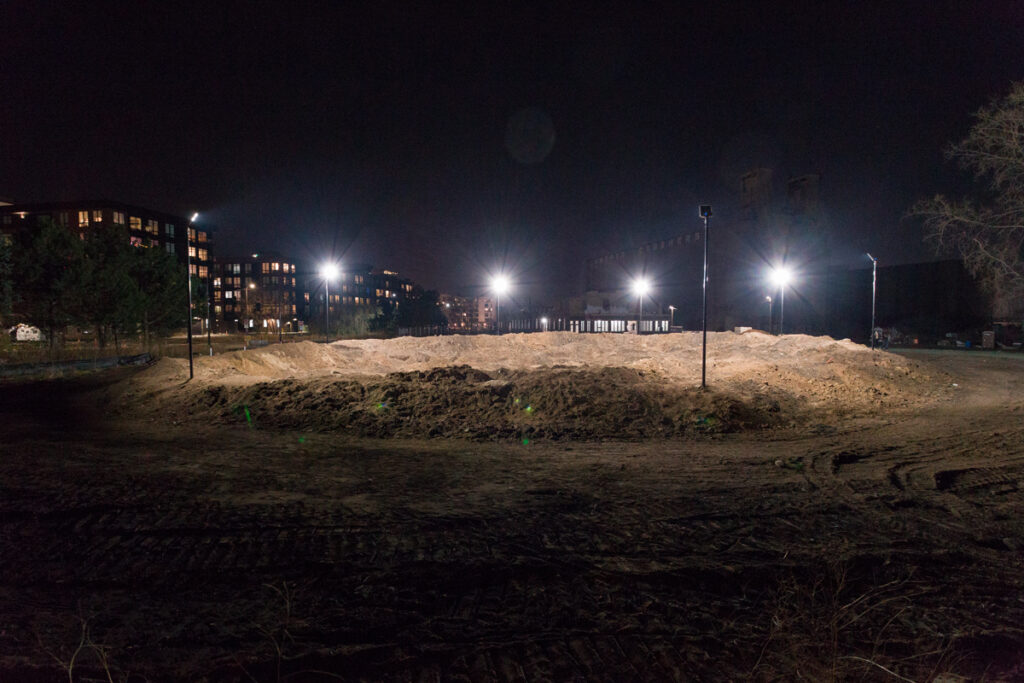
Jasper Marsalis, Stadium, 2020. Soil, concrete, LED parking lot lights, light poles, skid steers. 146 x 117 x 12 feet. Image courtesy the artist and Midway Contemporary Art; photo by Aaron Van Dyke. 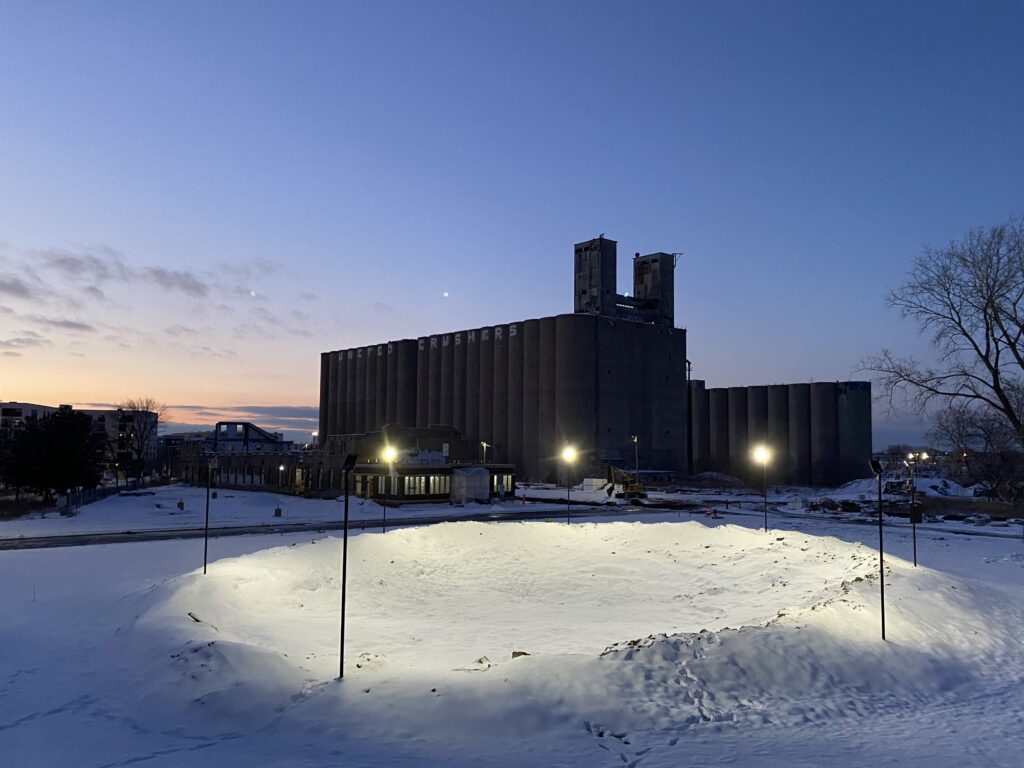
Jasper Marsalis, Stadium, 2020. Soil, concrete, LED parking lot lights, light poles, skid steers. 146 x 117 x 12 feet. Image courtesy the artist and Midway Contemporary Art.
In 2019, Marsalis exhibited a series of paintings and sculptures at Midway in a show titled ♪ A star like any other—. Press conference microphones and lurid spotlights encroach on the shadowy figures in the compositions. The paintings are linked by an unsettling emptiness, much like Stadium. It’s a self-conscious experience, walking around and inside Stadium, because the installation refuses an objective purpose or one identifiable subject. The empty space Marsalis creates is replete with anticipation; I am left waiting for something to happen, for something to reveal itself, or just appear. Marsalis does not satisfy this anxiety with anything specific, leaving us to reckon with our aimless bodies, our selves.
Prospect Park, the neighborhood in which the installation is situated, can also be characterized by anticipation. As mentioned above, Stadium is located in a new development that is promised to be a climate-friendly, mixed-use community. With any new construction, I can’t help but think about gentrification—and no matter the number of affordable units, I anticipate certain loss and displacement. It is important to highlight gentrification in the Twin Cities today, and to acknowledge that inequitable access to affordable and safe housing in Minneapolis, especially for Black folks, draws from a long history. Gentrification inherits its discriminatory strategies from a lineage of redlining and racially restrictive covenants.
In 1909, a group of white residents in Prospect Park discovered that a Black family purchased a lot in the neighborhood and planned to build a home. In protest, they launched a campaign against their future neighbors, threatening, “The white residents of this district do not want members of your race domiciled in our midst, if there is any way which men of judgement, prudence and determination can adopt to prevent it.” The family did not relent under the intimidation and finished constructing their home, where they lived until 1931. When I described Marsalis’s work as “conceptually convex,” this is, in part, what I meant. The historical remnants of Black construction fill the empty space in Marsalis’s Stadium. In my mind, Marsalis’s (de)construction creates a space in which we can consider the ponderous, threatening, and latent air that hovers, abstractly, in the project of constructing Blackness.
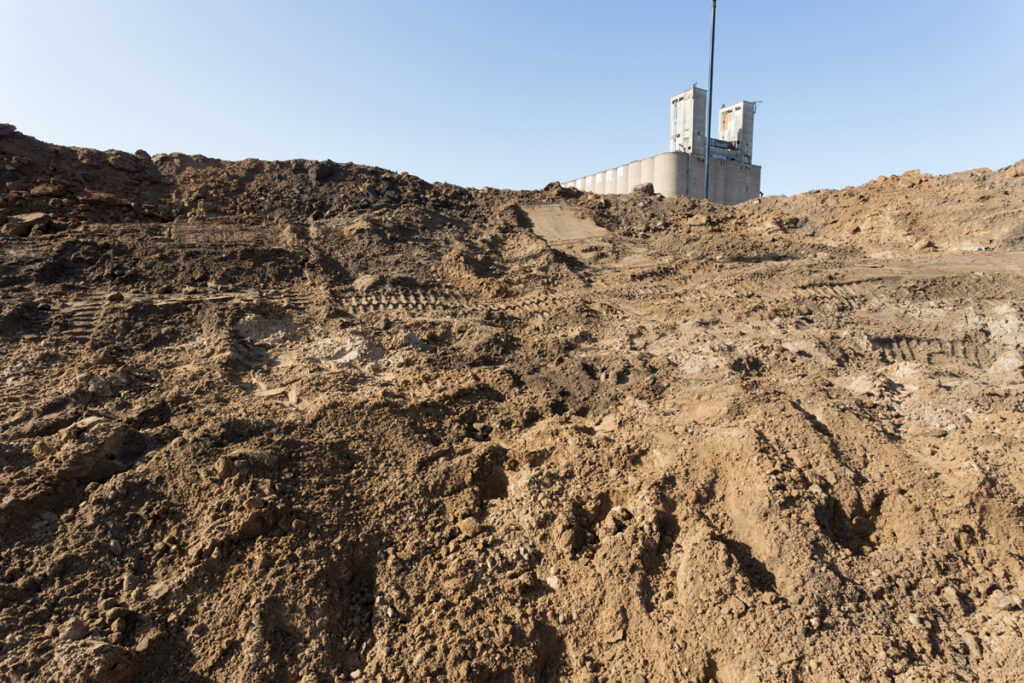
146 x 117 x 12 feet. Image courtesy the artist and Midway Contemporary Art; photo by Aaron Van Dyke.
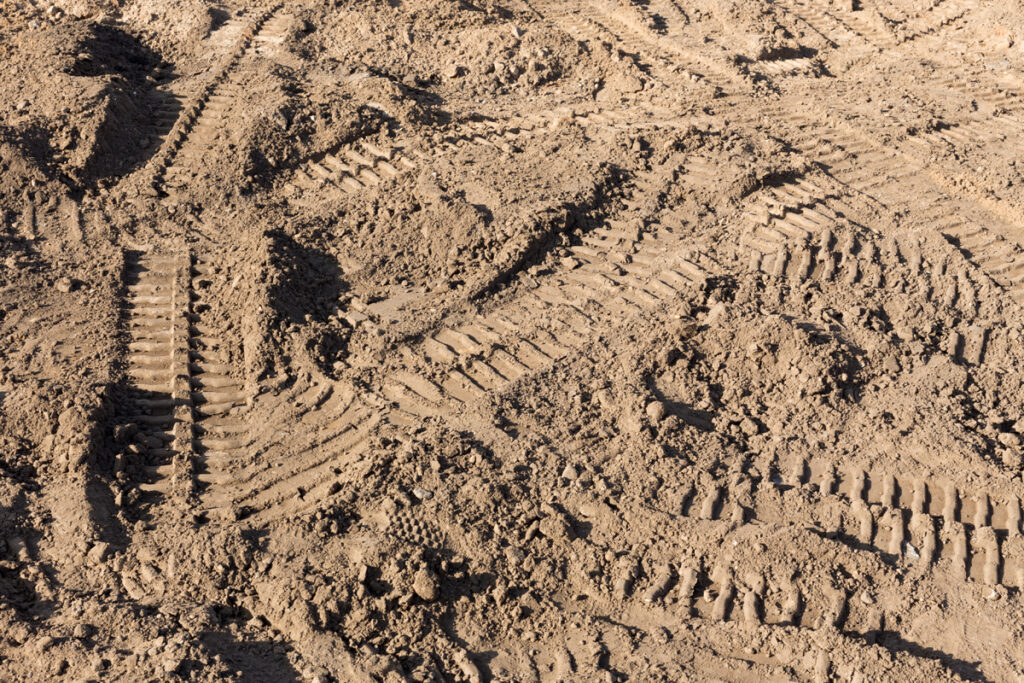
I find another specter in Marsalis’s work, this time in its concavity. That is, the reality of this past year in Minneapolis: the murder of George Floyd and a summer of uprising. Marsalis’s work feels like a simulacrum of rubble, soil, and concrete, all that is left of destroyed former businesses and buildings along Lake Street in South Minneapolis. I can’t decide whether these are constructions or deconstructions of Blackness in America, but I think in the same way that Stadium provokes a feeling of alienation rather than a literal reference to outer space, the ravaged lots in South Minneapolis indicate the climate destruction that so many Minnesotans choose to neglect, but are now forced to acknowledge.
Marsalis, who is also a musician, released Nergangenheitsbewältigung (Crater Speak) in 2020, an album that speaks the inscrutability of identity. In an interview he explains, “Your existence is always gonna be troublesome and that’s what’s been fueling a lot of my ideas lately, this in-betweenness of identity. That’s what I think real freedom is, lowkey, because freedom through the law is just law – like you’re a part of the state and you have rights now and your humanity is recognized by the state, which is maybe freedom in the most legitimate sense, but like artistically speaking freedom to me is outside of definition.” Our neighborhoods need to be rebuilt—for the sake of community, not the sake of capital. But in this moment, the empty holes in the ground are instructive spaces in which some of us imagine Minneapolis “outside of definition,” beyond the idea of “freedom through the law.”
Walking around the rim of Stadium, into its depth and returning to its perimeter, I become aware of the work of digging. It is work to deconstruct, to remove earth and encounter the new emptiness left behind—even more to recognize that no place is, or ever was, empty. Marsalis surfaces and sites this idea in Minneapolis, providing an opportunity to reflect on the absences and presence of a difficult year.